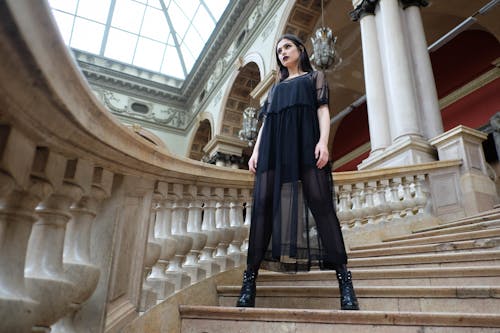
The fashion industry is a dynamic landscape, constantly evolving with new trends, innovative designs, and groundbreaking talent. As we move through 2024, the spotlight shines brightly on a fresh wave of emerging designers who are redefining the boundaries of fashion. These designers bring unique perspectives, innovative techniques, and a fearless approach to style, promising to shape the future of the industry. This essay explores some of the most influential emerging designers making waves in 2024, their contributions to the fashion world, and how they are setting new standards in creativity, sustainability, and inclusivity.
The Landscape of Emerging Fashion Talent in 2024
The emergence of new designers is often driven by several key factors:
- Technological Advancements: The rise of digital platforms and social media allows new designers to showcase their work to a global audience, bypassing traditional fashion gatekeepers.
- Increased Focus on Sustainability: As environmental concerns become more pressing, emerging designers are prioritizing sustainable practices, using eco-friendly materials and promoting ethical production methods.
- Diversity and Inclusivity: There is a growing emphasis on diversity and inclusivity in fashion, with new designers bringing fresh perspectives and challenging traditional norms.
These factors contribute to a vibrant and diverse fashion landscape where emerging designers are making a significant impact.
Highlighting Emerging Designers of 2024
Several emerging designers have garnered attention in 2024 for their innovative approaches and distinctive styles. Here are some of the most noteworthy talents making waves this year:
Aiden Lee
Background and Vision: Aiden Lee, a graduate of Central Saint Martins, has quickly risen to prominence with a vision that blends modern minimalism with avant-garde influences. Lee’s designs are characterized by their clean lines, unexpected silhouettes, and a meticulous attention to detail.
Key Collections:
- “Urban Elegance”: Lee’s latest collection, “Urban Elegance,” features sleek tailoring combined with unconventional fabrics, creating a juxtaposition between formal and casual wear.
- Innovative Fabrics: Lee is known for experimenting with new materials, including recycled synthetics and organic cotton blends, contributing to the sustainable fashion movement.
Impact: Lee’s ability to merge minimalism with innovation has caught the attention of fashion critics and influencers. His work represents a forward-thinking approach to luxury fashion, making it accessible and relevant for contemporary audiences.
Priya Patel
Background and Vision: Priya Patel, hailing from Mumbai, has made a name for herself with her vibrant, culturally rich designs. Patel’s work is deeply inspired by traditional Indian textiles and craftsmanship, yet it is reimagined with a modern twist.
Key Collections:
- “Heritage Fusion”: Patel’s “Heritage Fusion” collection incorporates intricate embroidery and traditional prints with contemporary silhouettes, bridging the gap between past and present.
- Sustainable Practices: Patel is committed to using sustainable materials and supporting local artisans, reflecting her dedication to ethical fashion.
Impact: Patel’s work has been celebrated for its ability to preserve cultural heritage while embracing modern aesthetics. Her approach to sustainable fashion and cultural representation is paving the way for a more inclusive and responsible industry.
Jasper Kim
Background and Vision: Jasper Kim, a South Korean designer, is known for his bold, experimental designs that push the boundaries of conventional fashion. Kim’s collections often feature oversized proportions, vibrant prints, and unconventional materials.
Key Collections:
- “Future Shock”: Kim’s “Future Shock” collection explores themes of dystopia and futurism, with garments that challenge traditional notions of fit and form.
- Material Innovation: Kim experiments with tech-infused fabrics and 3D printing, creating garments that are both visually striking and functionally advanced.
Impact: Kim’s fearless approach to design and material experimentation has made him a standout figure in the fashion world. His work is at the forefront of technological integration in fashion, setting new standards for innovation.
Emilia Rossi
Background and Vision: Emilia Rossi, an Italian designer, has gained recognition for her elegant, timeless designs that emphasize craftsmanship and quality. Rossi’s collections often feature luxurious fabrics and meticulous tailoring.
Key Collections:
- “Classic Reimagined”: Rossi’s “Classic Reimagined” collection offers a modern take on classic silhouettes, blending traditional techniques with contemporary styles.
- Focus on Craftsmanship: Rossi’s commitment to high-quality materials and skilled craftsmanship highlights her dedication to creating enduring fashion pieces.
Impact: Rossi’s emphasis on timeless elegance and craftsmanship has resonated with both critics and consumers. Her work represents a refined approach to fashion that values quality and longevity over fleeting trends.
Zara Martinez
Background and Vision: Zara Martinez, a Mexican-American designer, is celebrated for her eclectic and vibrant designs that draw inspiration from her multicultural background. Martinez’s work often incorporates bold colors, graphic prints, and playful elements.
Key Collections:
- “Color Pop”: Martinez’s “Color Pop” collection features an array of bold, vibrant garments that celebrate diversity and individuality.
- Cultural Fusion: Martinez’s designs reflect her multicultural influences, combining elements from different cultures to create a unique and cohesive aesthetic.
Impact: Martinez’s celebration of cultural diversity and individuality has made her a prominent voice in contemporary fashion. Her work challenges traditional fashion norms and embraces a more inclusive and vibrant approach.
The Role of Sustainability and Ethics in Emerging Fashion
As the fashion industry becomes more aware of its environmental impact, emerging designers are leading the charge in sustainable and ethical practices:
Sustainable Materials
Many emerging designers are prioritizing the use of sustainable materials, such as organic cotton, recycled fabrics, and low-impact dyes. These choices reflect a commitment to reducing the environmental footprint of fashion.
- Recycled Fabrics: Designers like Aiden Lee and Priya Patel use recycled materials to create new collections, promoting a circular fashion economy.
- Organic Materials: The use of organic cotton and other eco-friendly fabrics helps to minimize the environmental impact of textile production.
Ethical Production
Ethical production practices are also gaining traction among new designers:
- Fair Labor Practices: Emerging designers are increasingly committed to ensuring fair wages and safe working conditions for their artisans and manufacturers.
- Local Production: Some designers, like Priya Patel, support local artisans and production, reducing the carbon footprint associated with global supply chains.
Transparency and Accountability
Transparency is becoming a key value in the fashion industry:
- Supply Chain Transparency: Many new designers are focusing on providing transparency about their supply chains, allowing consumers to make informed choices.
- Certifications and Standards: Designers are pursuing certifications such as Fair Trade or Global Organic Textile Standard (GOTS) to validate their commitment to ethical practices.
The Influence of Technology and Digital Media
Technology and digital media play a significant role in the success of emerging designers:
Social Media
Social media platforms like Instagram and TikTok provide emerging designers with a global stage to showcase their work and connect with audiences:
- Visual Storytelling: Designers use social media to share their creative process, behind-the-scenes content, and finished collections, building a strong online presence.
- Direct Engagement: Social media allows designers to interact directly with consumers, gaining feedback and fostering a loyal following.
E-Commerce and Digital Fashion
The rise of e-commerce and digital fashion platforms has made it easier for emerging designers to reach a wider audience:
- Online Stores: Many new designers operate online stores, providing a convenient way for consumers to purchase their collections.
- Digital Fashion Shows: Virtual fashion shows and digital presentations allow designers to showcase their work to a global audience without the constraints of traditional runway shows.
Tech-Infused Design
Emerging designers are exploring the integration of technology into their designs:
- 3D Printing: Designers like Jasper Kim use 3D printing to create innovative garments with unique textures and shapes.
- Smart Fabrics: The incorporation of smart fabrics and tech-infused materials is pushing the boundaries of fashion design and functionality.
The Future of Emerging Designers in Fashion
The future for emerging designers in 2024 and beyond looks promising, with several key trends likely to shape their continued success:
Continued Innovation
Emerging designers will continue to push the boundaries of creativity and innovation, exploring new materials, techniques, and technologies. Their willingness to experiment and challenge conventions will drive the evolution of fashion.
Growing Emphasis on Sustainability
As environmental concerns grow, emerging designers will increasingly prioritize sustainable practices, from material choices to production methods. Their commitment to sustainability will be a significant factor in shaping the future of fashion.
Expanding Inclusivity and Diversity
The fashion industry’s focus on inclusivity and diversity will continue to expand, with emerging designers bringing a wide range of perspectives and cultural influences to their work. This shift will foster a more inclusive and representative fashion landscape.
Integration of Digital Platforms
Digital platforms will play an essential role in the success of emerging designers, offering opportunities for global exposure, direct consumer engagement, and innovative presentation methods.

The emerging designers of 2024 are making significant contributions to the fashion industry, bringing fresh perspectives, innovative techniques, and a commitment to sustainability and inclusivity. Their work is shaping the future of fashion, offering exciting new possibilities and redefining the boundaries of creativity. As these designers continue to make waves, their influence will undoubtedly impact the broader fashion landscape, inspiring new trends and setting new standards for the industry. The future of fashion is bright, with these emerging talents leading the way and demonstrating that the art of design is ever-evolving and full of potential.



